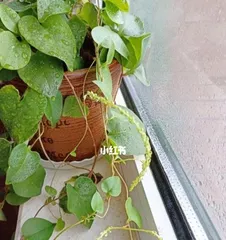Potted Sanqi is a plant very suitable for home cultivation. It not only has beautiful leaves but also high ornamental value. If you like a fresh and simple style for your balcony, then potted Sanqi is definitely a good choice. How to care for potted Sanqi? This article will provide you with a detailed introduction.

1. Time and Place to Purchase Potted Sanqi
When purchasing potted Sanqi, it is best to choose spring and autumn, as the temperature is suitable during these times, which is conducive to the plant's growth and development. As for the location, it is recommended to buy from large flower markets or regular specialty flower shops.

2. Tips for Selecting Potted Sanqi
When selecting potted Sanqi, you can consider the following aspects: First, observe if the leaf color is fresh and green, and check for pests and diseases. Second, see if the leaves are uniform, and check for scratches, wilting, or other phenomena. Third, observe if the root system is healthy, and check for rot or other issues.
3. Soil and Pot Selection for Potted Sanqi

Potted Sanqi needs sufficient water and air for growth, so when choosing soil, it is best to select a type that is well-draining, has strong water retention, and is rich in nutrients, such as a mixture of river sand, humus soil, and garden soil. As for the pot, it is best to choose a ceramic or terracotta pot, as this is both aesthetically pleasing and beneficial for the plant's growth.
4. Watering Method for Potted Sanqi
Potted Sanqi has a relatively high demand for water, but overwatering or improper watering can harm the plant. Under normal circumstances, the amount of water for each watering should be controlled to about 1/3 of the volume of the plant's container. At the same time, it is also necessary to drain any excess water from the bottom after each watering.
5. Fertilization for Potted Sanqi
Potted Sanqi needs appropriate fertilization, but too much fertilizer can lead to problems such as overly rapid growth and softening of the stems. It is recommended to fertilize once a month in spring and autumn. The fertilizer used can be organic or chemical.
6. Light Conditions for Potted Sanqi
Potted Sanqi prefers an environment with ample light, but excessive direct sunlight can damage the plant. It is recommended to place potted Sanqi outdoors during the spring and autumn seasons, and in winter, it can be placed on an indoor balcony or by a window.
7. Temperature and Humidity for Potted Sanqi
Potted Sanqi is relatively cold and heat tolerant, but the most suitable temperature range for growth is 20-30°C. At the same time, potted Sanqi also prefers a relatively humid environment. In the summer, you can appropriately increase the indoor humidity, for example, by using a humidifier or spraying water.
8. Pest and Disease Control for Potted Sanqi
Common pests and diseases for potted Sanqi include aphids, powdery mildew, and red spider mites. For prevention and control, you can manage them by regularly spraying pesticides, maintaining ventilation, and increasing indoor humidity.
Potted Sanqi is a beautiful and practical plant, and with the right care methods and techniques, it can thrive and grow well at home. We hope the introduction in this article can provide some help for your cultivation and care.